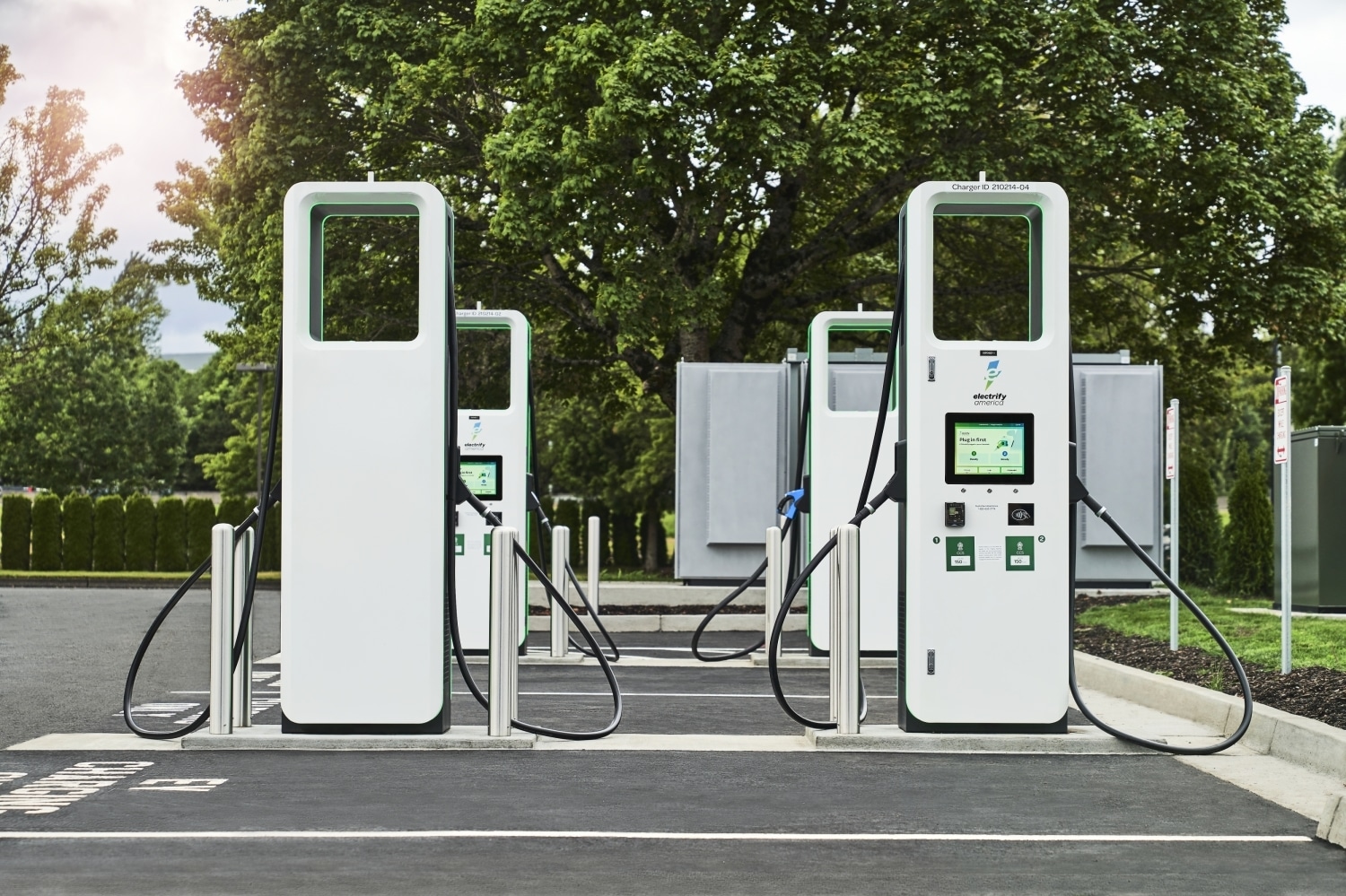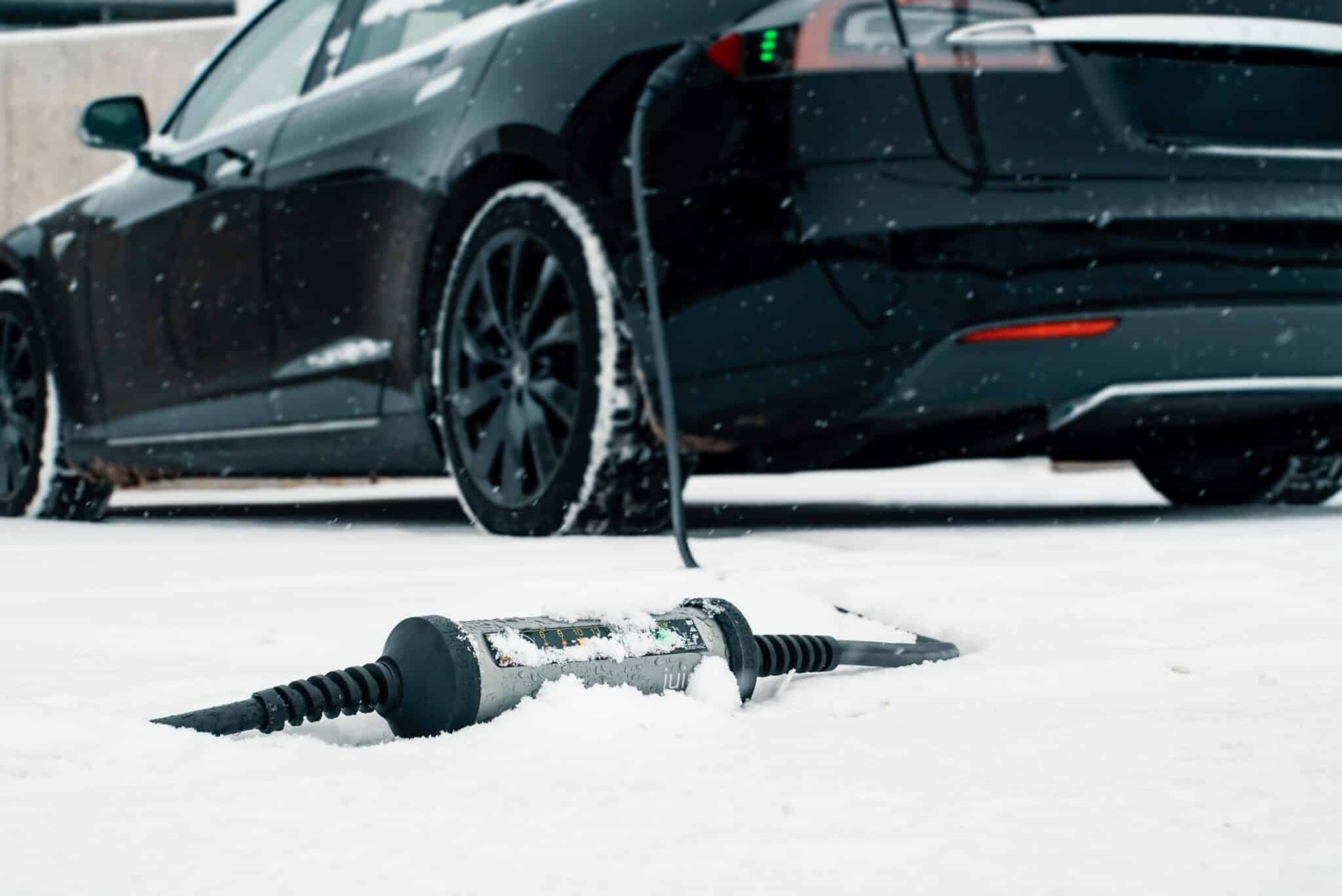Are you dreaming of driving an electric vehicle (EV), but the lack of a garage is holding you back? You’re not alone. Many potential EV owners share this concern. However, we’re here to tell you that owning an electric car without a garage is not just a possibility, it’s becoming increasingly common!
In this modern age, where EVs gain in popularity, charging infrastructure is rapidly evolving, making it easier than ever to own an electric car no garage. Many EV owners in apartments, condos, and townhouses are managing to park just fine without one. Now, let’s discuss how you can do this too.
How to Charge Your Electric Car Without a Garage
Charging your EV without a garage involves a bit of creative thinking but is entirely feasible. The primary options are public charging stations, setting up an outdoor home charging point, or charging at work if the option is available. Each of these options has its advantages and unique considerations:
- Public Charging Stations: These are often located in public parking areas, shopping centers, or dedicated charging parks. They can provide a quick and convenient charge while you’re out and about.
- Outdoor Home Charging: This involves setting up a charging station at home, even if you don’t have a garage. It could be a Level 1 or Level 2 charger installed in a weatherproof casing to protect it from the elements. Many chargers available today are rated to be installed outdoors.
- Workplace Charging: Many businesses are now offering EV charging stations as a perk for their employees. If available, this could be an excellent option for charging your EV during the day.
The Magic of Standard 120-volt Outlets
Also known as Level 1 charging, this method involves using a standard 120-volt outlet. It’s the same kind of outlet you’d use to plug in a toaster or a laptop. Level 1 charging typically provides about 2 to 5 miles of range per hour of charging. While this might seem slow, it can be quite effective if you’re charging overnight or if your daily commute is relatively short. The beauty of Level 1 charging is its simplicity – all you need is the charging cord that comes standard with most EVs and a dedicated electrical outlet.
If you’re just getting started with EV charging or have a shorter daily commute, Level 1 charging might be all you need. And, if you’re looking for high-quality Level 1 chargers, look no further than our EV Universe Shop Parts. We offer a variety of Level 1 chargers that are simple to use and perfect for everyday charging.
Leveling Up: Using a Level 2 Charging Station
If you’re looking for a faster home charging solution, a Level 2 charging station might be for you. These chargers operate at 240 volts and can provide around 10 to 60 miles of range per hour of charging, depending on the vehicle and charger specifications.
Installation of a Level 2 charger involves electrical work, as it requires a dedicated 240-volt circuit. It’s similar to the kind of outlet used for large appliances like clothes dryers. Though installation is more complex than a Level 1 charger, many people find the increase in charging speed to be worth it.
If you’re thinking about upgrading to a Level 2 charger, check out our selection on the EV Universe Shop Parts. We offer a variety of Level 2 chargers that can cater to your specific needs, ensuring you have the right equipment to make the most of your electric vehicle experience. A Level 2 charger can be a game-changer, considerably reducing the time you spend waiting for your car to charge, and getting you back on the road quicker.
The Wonders of Public Charging Stations
Public charging stations are a great resource for EV owners. They are becoming more common in cities and can often be found at shopping centers, public buildings, and dedicated charging parks. These are typically Level 2 or Level 3 chargers, the latter of which is also known as DC Fast Charging and can charge most EVs to 80% in about 30 minutes.*
To find public charging stations, there are several apps and websites available, such as PlugShare and Electrify America, that provide maps of nearby charging stations, along with user reviews and availability status.

Courtesy of Electrify America
*Charging times can vary depending on factors like charging station capabilities, weather conditions, vehicle make, model, battery remaining range, and other variables.
Deciding on the Best Location: Where to Mount Your Home Charging Station
Choosing the right spot to install your home charging station is a crucial step in optimizing your EV charging experience. It’s not just about power accessibility; it’s also about ease of use and safety. Here are a few factors to consider:
- Proximity to your vehicle: Ideally, your charger should be as close as possible to your car’s charging port for convenience. Remember, you’ll be plugging and unplugging each time you use the vehicle.
- Protection from elements: While many charging stations are built to withstand the weather, positioning your charger in a sheltered location can extend its lifespan. If you’re installing an outdoor charger without a garage, consider a spot with some protection from rain and snow.
- Access to power supply: Your charging station needs to be near an electrical source. Consult with a professional electrician to assess the best location considering your home’s power grid.
Deciding where to mount your home charging station requires careful consideration. It’s all about balancing proximity to your vehicle, the station’s protection from the elements, and its access to a power supply. Remember, every situation is unique, so don’t be afraid to customize your approach to best suit your needs. This careful planning will ensure you enjoy the maximum benefits of your EV and its home charging station.
Power Distance: Considerations of Cord Length for Optimal Charging
The length of your EV charging cord can greatly influence your charging setup. Here’s why:
- Flexibility: A longer cord offers more flexibility in terms of where you park your EV relative to the charging station. This can be particularly useful if you have multiple electric cars or if your parking situation varies. For instance, you might find our article on choosing the right Tesla charger extension cord insightful.
- Safety: While a longer cord provides flexibility, it can also be a tripping hazard if not managed correctly. Ensure excess cord is stored safely and not left in areas where people might trip.
- Power loss: Be aware that some power loss can occur with longer charging cords. This is usually minimal but can affect charging time slightly.
- Cord management: Consider how you’ll store the cord when it’s not in use. Some charging stations come with built-in cord management systems, while others may require a separate solution.
The right balance of cord length and safety can make all the difference in ensuring a smooth and hassle-free charging experience. The key is to evaluate your specific needs and parking situation before making a decision. And remember, it’s better to have a little extra length than not enough!
Planning Ahead: A Key to EV Ownership Without a Garage
Owning an electric car without a garage does require some planning, particularly when it comes to charging. Be aware of charging stations on your regular routes and familiarize yourself with the charging process. It’s also important to understand your EV’s range to effectively plan your charging schedule. With a bit of planning and adapting, charging your EV without a garage can become a seamless part of your routine.
Conclusion: Embracing the Electric Revolution, Garage or Not
As we’ve discussed, owning an electric vehicle without a garage is more than just a possibility; it’s a reality for many EV owners today. Lack of a garage shouldn’t deter you from enjoying the numerous benefits of driving an EV – from the environmental impact to the savings on fuel and maintenance costs.
Navigating the world of EV charging without a garage can make you more attuned to the growing infrastructure of public charging stations. You’ll likely become a pro at finding and using them, and you might even discover that you prefer the convenience they offer. Moreover, installing an outdoor charging station at your home, be it Level 1 or Level 2, can offer you the convenience of charging your EV right at home. But it’s not as simple as just setting up the charger anywhere. As we’ve noted, choosing the right spot for your charging station is key. Similarly, considering the length of your charging cord is vital for safety and convenience.

Professional installation ensures that these outdoor chargers are safe and resilient, capable of withstanding various weather conditions. And with the right placement and cord length, you can make your charging setup both practical and efficient.
One key takeaway is the importance of planning ahead. Knowing your EV’s range, understanding the locations of charging stations on your daily route, and timing your charging sessions can all help to ensure a smooth EV driving experience.
In the end, the transition to electric is not just about changing the kind of car we drive, but also adapting to new ways of ‘refueling’. With a bit of adaptability and planning, you can easily join the EV revolution, garage or not. Remember, every revolution has its challenges, but the rewards – a sustainable, cost-effective, and enjoyable driving experience – are well worth it. So here’s to embracing the electric revolution and to a future of cleaner, greener driving! Happy charging!

